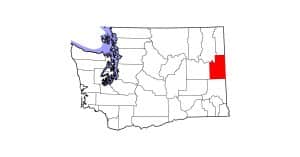Study: Horses Could Be Susceptible To COVID-19 Infection

While further testing on live animals is needed to prove her theory, genetic and molecular data point to an increased risk of infection in horses compared to many other animal species, said Jacquelyn A. Brown, PhD, a neuroscientist and director in the Vanderbilt Institute for Integrative Biosystems Research and Education at Vanderbilt University, in Nashville, Tennessee.
Cat and Horse Enzymes Tie for Covid-19 Susceptibility Scoring
On the outside, it would be hard to confuse an alley cat for a mustang. But deep in the cells of all vertebrates, a tiny receptor acts as a gateway to soliciting viruses, letting them gain access into the cells. And in cats and horses that receptor looks remarkably similar. Because SARS-CoV-2 (the virus that causes COVID-19) gets past the feline gatekeeper receptor, it might get past the equine one, as well, said Brown.
That’s the conclusion her team recently reached when they took a detailed look at the protein composition of these gatekeeper receptors—angiotensin-converting enzyme 2 (ACE2)—in several animal species to understand which compositions “click” with the SARS-CoV-2 virus and let it get in the cell. Specifically, one section of that ACE2 binds to a part of the spike protein on the virus, and when it does, it’s like the moment a building’s keypad recognizes your key fob. The door opens, and access is granted.
They looked at the ACE2 of humans and animals already known to easily acquire SARS-CoV-2 infection (lions, tigers, house cats, rhesus monkeys, certain hamsters), those that don’t (mice, ducks, chickens), and those that can acquire it but seem less susceptible (dogs and pigs). Through a complex process using genetic sequence alignment and a structural analysis of the difference ACE2 enzymes, the scientists developed an algorithm that predicts how susceptible each species might be to SARS-CoV-2 infection. Then, using known data on ACE2 in species not yet tested for COVID-19, such as horses, they developed a sort of “susceptibility scale” that gives a certain number of points for how susceptible the animal might be to catching SARS-CoV-2.
Horses ended up with the same number of points (27) on their susceptibility scale as house cats, tigers, and lions. Incidentally, she added, so did camels. Rhesus monkeys scored higher, at 31 points, along with a previously untested species, the Chinese horseshoe bat. Cows, goats, and sheep all scored 19, whereas pangolins scored 13, mice scored 11, and ducks and chickens both scored 8. And now, anyone with relevant ACE2 data can plug files into the team’s free online algorithm to get a susceptibility score for any species.
Susceptible Doesn’t Mean Sick
Brown is careful to specify that her work is based on genetic and molecular data, not on trials with animals themselves—which would be difficult and costly, she said. As such, their model serves as an estimate, but not a certainty, about each species’ susceptibility score.
“When we talk about susceptibility, we mean the possibility of the SARS-CoV-2 virus to infect the host cells and replicate itself,” Brown said. “This does not necessarily mean that the host will get sick. Also, we did not infect any animals or their cells; the prediction of susceptibility was based solely on the sequence homology at key residues of the ACE2 gene.”
Although horses are known to be susceptible to equine coronavirus (ECoV), which is specific to equids, that’s not necessarily what would make them more susceptible to SARS-CoV-2, as these are two distinct coronaviruses with different compositions, Brown said. That said, no genome comparisons between the two coronaviruses appear to have been published as of yet, she added.
No Equine Cases? Or Just No Testing?
If horses truly are susceptible to SARS-CoV-2, which has now infected 156 million people worldwide (many of whom are in contact with horses), wouldn’t we be seeing cases rising in horses, too?
“Who says we are not?” said Brown. “To date, I have not found that even one horse has been tested for COVID-19. So, if horses do get it, it’s clear that it is not very lethal in them, like it is for mink, or we would have noticed that. However, plenty of horses are diagnosed with viral respiratory infections, but no COVID tests are being run on them, so we have no way of knowing if they do get it or not.”
If horses do acquire the disease—which remains to be confirmed through further research—then they would be able to act as reservoirs and could, in rare circumstances, spread it back to humans, said Brown. “The truth is, we don’t know, and it would be good if testing materials were not in short supply to start looking into this just to rule it out,” she said. People need data to know what we’re dealing with; without that, she said, it’s “like covering your eyes and saying you see nothing to worry about.”
Sensible COVID Caution on the Farm
While her team’s model suggests humans might be able to transfer SARS-CoV-2 to their horses, there’s still no proof it’s happening, said Brown. Even so, it makes sense to be careful, she said.
“We just don’t know if we can give COVID to horses, but until we do, why take unnecessary risks?” Brown said.
“Number one, wash your hands,” she said. “If you have the virus on them, think of how often you touch your horse’s nose and mouth while grooming and tacking up.
“And number two, wear a mask,” she continued. “While riding in one is not the most fun, I actually like having mine on when grooming. It really reduces the amount of dust I breathe in, and when my horse puts her face in mine, if I’m infected, my air is being filtered before it gets to her.”

Written by:
Christa Lesté-Lasserre, MA
Related Articles
Stay on top of the most recent Horse Health news with












